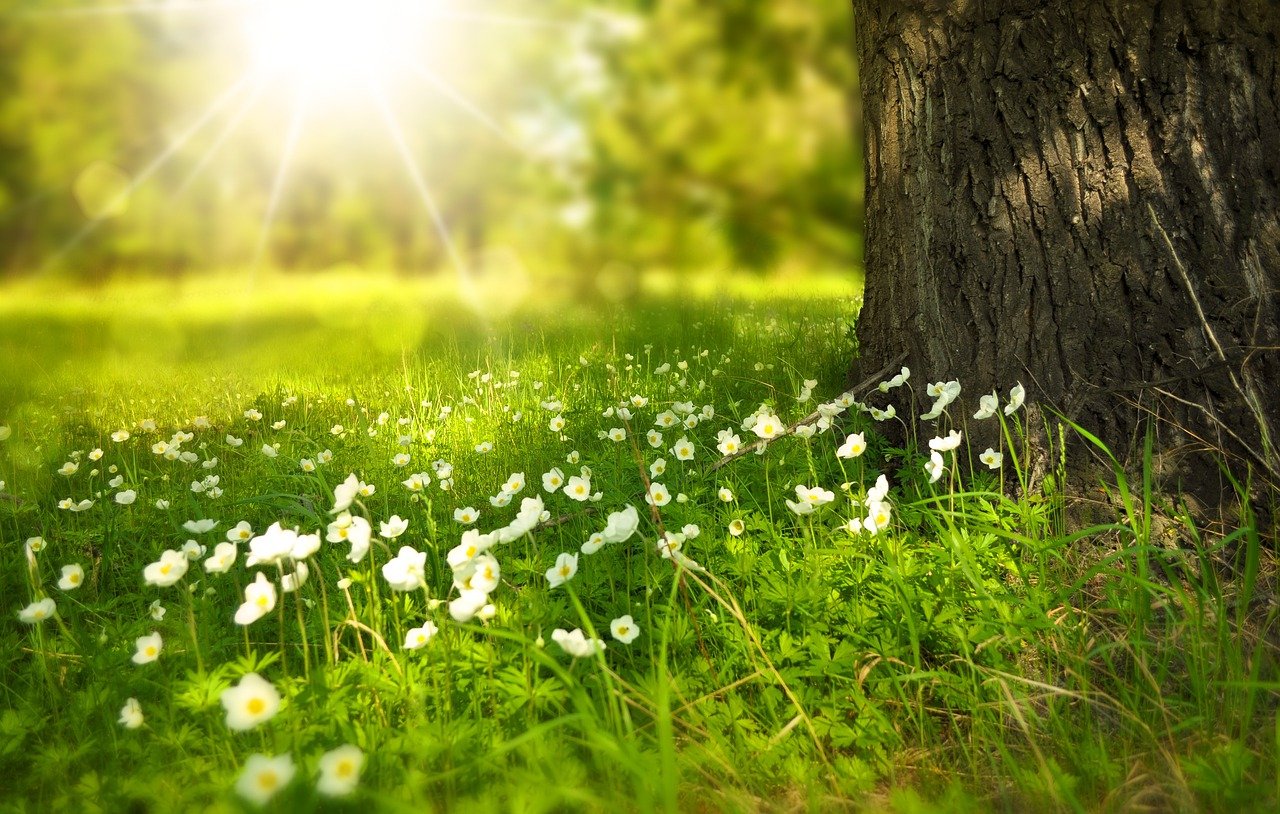Getting new grass to develop can’t be that troublesome, can it? For what reason do such numerous individuals experience a battle?
Is there a mystery you should know? Actually, there is no puzzle as, to why the grass is greener on the opposite side of the fence. The reason is your neighbor knew the correct activities when he was getting new grass to develop. He knew the ideal time to do them, and he realized what not to do.
In only a couple of minutes, you can have similar information!
1. Identify your grass type and mowing tips:
In the event that you need to have a green garden, you have to distinguish what kind of grass you have. Diverse kind of grass requires different mowing heights and yard treatment. For the most part, there are two kinds of grass
- warm-season grass
- cool-season grass.
Warm-season grasses develop best with full sun at temperatures in the vicinity of 25 and 30 C. Then again cool-season grasses best develop in zones like where the temperature ranges from 16 to 24 C and can endure incomplete shade.
The fundamental contrast between cool-season and warm-season grasses is the manner by which they develop and act, warm-season grasses can develop by seeds and also sprinters while cool-season grasses must be planted from seeds.
2. Mow the Lawn Properly for Different Grass Types:
How to mow grass, the right way is one of the most important practices in keeping your lawn healthy. One common mistake made by homeowners is cutting grass too short, If a yard cut too short, It diminishes the plant’s capacity to deliver vitality for development.
The general dependable guideline is never to cut grass in excess of 33% of the aggregate height. The following are the rules to cut your grass at the ideal mowing height.
Warm Season Grasses
• Bahia: 2.5 – 4 inches
• Bermuda: 0.5 – 2.5 inches
• Buffalo: 1.5 – 4 inches
• Centipede: 1 – 1.5 inches
• Kikuyu grass: 1 – 1.5 inches
• St. Augustine: 1 – 3 inches
• Zoysia: 0.5 – 3 inches
Cool Season Grasses
• Fine fescue: 1.5 – 4 inches
• Kentucky twang: 0.75 – 3.5 inches
• Perennial ryegrass: 0.75 – 2.5 inches
• Tall fescue: 1.5 – 4 inches
3. Aerate your lawn:
Aerating is the process of punching small holes all over your lawn. Aeration is important to relieve soil compaction and to enable air to flow around the grassroots and the base of the leaf blades. On the off chance that you can’t screwdriver through your saturated soil, at that point, it’s the time for aerating.
There are numerous approaches to circulate aerate your lawn. You can lease a gas-powered core aerator.
It can cost you about 40$-80$ per day. However, you should utilize it when the soil is wet and delicate however not sloppy. You can even utilize the gardening fork for aerating. Hold a fork with the tines perpendicular to the lawn.
Drive the tines straight into the ground, jabbing gaps that infiltrate the root zone of the grass. Keep on piercing in the ground at 4-6 inch intervals in succession until the point when the whole lawn is aerated. You have another alternative like scarifier, slitter, or spiked boots. You can use it according to your benefit.
4. Learn how to fertilize:
Fertilizer causes the soil to supply supplements that grass needs for development and greenness. It is essential to pick the right fertilizer on the off chance that you expect a healthy and green garden.
While picking the correct nourishment for your grass, you have to consider factors like where you live, what sort of grass you have, what season it is, and so on.
Nitrogen is each grass’s most essential element for fertilization. Measure the length and width of the territory you need to fertilize. Then measure out enough fertilizer to cover the territory with fertilizer at the rate of 20 pounds for every 1000 square feet. Spread perfect sum similarly. Begin with freshly cut grass. Walk gradually, splashing from side to side.
5. Seeding bare spots in Lawn:
Does your grass have bare spots? A lawn bare spot makes your lawn ugly. The best answer for it to plant grass seed. Now you might be asked how to do it? To start with, clean up the area. Remove rocks, sticks from the bare spots.
Rake the entire area. Loosen the soil with a metal rake up to 1-2 inches. Now spread the seeds evenly by hand in the clean-up area. It will help to hold the moisture and protect seeds from a bird. Sprinkle water every day on it to develop the grass.
6. Watering the grass:
A proper watering schedule can easily transform your new garden into the rich green lawn you have constantly needed. Watering grass seed appropriately is basic to kick-start the germination procedure that results in healthy growth.
Watering grass is a very simple process that only requires a small investment of time and a little trick. The best time to water grass is toward the beginning of the day and evening. Water your lawn early in the morning 4 AM to 7 AM or in the evening between 6 PM to 8 PM for better ingestion.
The normal lawn just needs 2.5 cm of water each week. 2.5 cm water per week allowing the water to reach deep into the root system. It will usually take 10-15 minutes to water your lawn.
7. Use a broadcast spreader:
Keeping up an appealing lawn takes not just lots of hard work, learning, timing, and great climate yet, in addition, the exact utilization of the best possible seed and chemicals. Every product you apply needs an alternate spread rate. Too much is wasteful and could kill your lawn.
A decent fertilizer spreader can apply only the appropriate measure of the product. You ought to pick the model that has an adjustable spread rate setting to deliver the product uniformly and inaccurate amounts to the left, center, and right while applying the recommended volume for your lawn size.
8. Eliminate a few weeds one by one:
Growing a weed-free lawn can be stress-free when you take a few simple preventive steps in early spring before weeds take hold. The best time to evacuate weed is the point at which the dirt is sodden and clammy.
The best, however, the hardest path is to pull weeds one by one by hand. However, simply remember that you should expel the entire plant with its root. For weeds with shallow roots, you can hold the plant by its stem and draw delicately. Nonetheless, for weeds with more profound roots, you have to take additional care.
You can utilize a scraper to dive in the dirt around the stem to release the dirt, and after that get a firm handle and force. There are some different techniques as well to remove weeds like removing with a hoe or by using chemical products. You can use any at your convenience.
9. Use liquid broadleaf weed killers:
Use liquid broadleaf weed killers to kill a yard brimming with weeds. Liquid fertilizers are simpler to deal with when mixing and applying. It works very quickly. You should use liquid fertilizer since it can be utilized for both starter and in-season applications.
A few sources have demonstrated as liquid fertilizer contains less salt and, therefore, is the better decision for putting down straightforwardly with the seed. Even you can use it for lawn pest control. The lower salt content limits potential seed burn and tissue damage.
10. Don’t skip the fall fertilizing:

In the event that you need your yard to thrive, you should perform fall fertilizing. Taking the time to fertilize in fall will fortify your lawn’s underlying foundations, giving them a solid base on which to flourish next spring.
Presently you may think about what to use to prepare your lawn. Well, all fertilizers include three principal nutrients, which are
• Nitrogen- For better blade growth and stronger foliage
• Phosphorus- For strong root growth and development
• Potassium- For overall strength and better nutrient absorption
5-10-5 is the formula (or proportion) that you have to use for fall fertilizing. Now here the first number is nitrogen, the second number is phosphorus and the last number is potassium of course. Keep in mind formula is most important while using nutrients for fertilizing.








